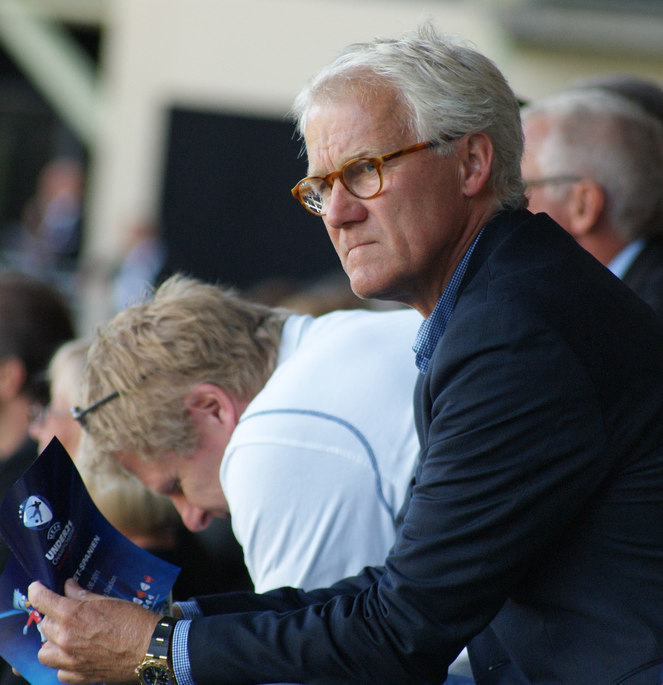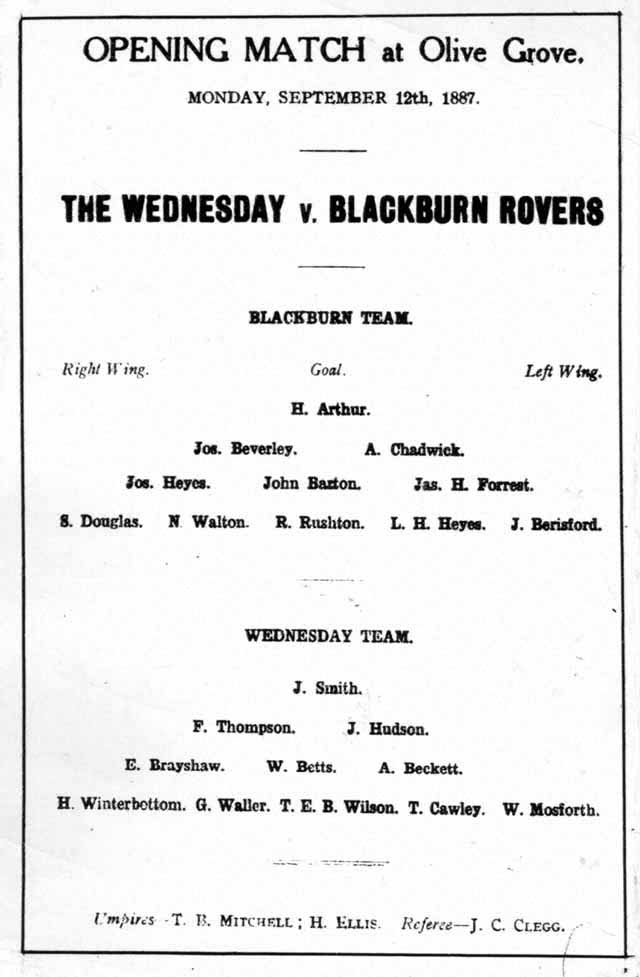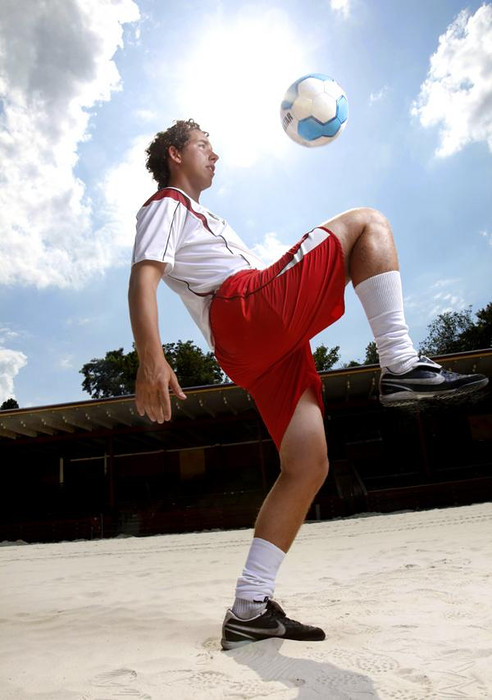|
Ole Bjur
Ole Bjur (born 13 September 1968) is a Danish former professional footballer who played 384 matches for Brøndby IF, with whom he won three Danish Superliga championships. He played as an attacking midfielder or right midfielder, with a good technique and dribbling ability. He represented the Denmark national team on three occasions, scoring one goal. He is the younger brother of Danish footballer Jan Bjur, and father of Peter Bjur. Club career Born in Rødovre, Bjur started playing football with Vanløse IF in the second-tier Danish 2nd Division. When the structure of Danish football was altered in 1991, Vanløse was placed in the second-tier Danish 1st Division. At Vanløse, Bjur showed himself as a forward with good finishing and eye for the game, and was named 1991 Danish 1st Division ''Player of the Year''. This attracted the attention of defending Danish champions Brøndby IF, and Bjur moved to the top-flight Danish Superliga club in July 1991. Under Brøndby manager Mor ... [...More Info...] [...Related Items...] OR: [Wikipedia] [Google] [Baidu] |
Rødovre
Rødovre is a town in eastern Denmark, seat of the Rødovre Municipality, in the Region Hovedstaden. The town's population 1 January 2019 was 39,907, and in addition 145 persons had no fixed address, which made up a total of 40,052 in the municipality as a whole. Rødovre is part of the urban area of Copenhagen. History Until 1901, the town was part of the parish of Brønshøj-Rødovre. Vanløse was also part of that parish. In that year, Rødovre was created as independent municipality and Brønshøj was simultaneously annexed by the city of Copenhagen. Geography Rødovre, co-extensive with the territory of its municipality, is in the central-western suburbs of Copenhagen, bordering Copenhagen Municipality to the east, Glostrup to the west, Herlev to the north, and Brøndby and Hvidovre to the south. The town mostly comprises suburban homes in the south and light industrial areas in the north. It has several smaller green areas, including Schweizerdalsparken, and larger areas ... [...More Info...] [...Related Items...] OR: [Wikipedia] [Google] [Baidu] |
Morten Olsen
Morten Per Olsen (born 14 August 1949) is a Danish football manager and former player. He was the head coach of the Denmark national team for 15 years from 2000 until 2015, guiding Denmark to the 2002 FIFA World Cup, 2004 European Championship, 2010 FIFA World Cup and 2012 European Championship. He has also managed Brøndby IF to two Danish Superliga championships and Ajax to the Double of the 1998 Eredivisie championship and Dutch Cup trophy. He is one of only two persons ever in football, alongside Didier Deschamps, to achieve 100 national matches for his country both as player as well as coach. In his active career, Olsen predominantly played as a defensive midfielder and libero. He played professionally in Belgium and Germany, and won the 1983 UEFA Cup and three Belgian First Division championships with R.S.C. Anderlecht. Olsen played a total 102 matches and scored four goals for the Danish national team from 1970 to 1989, and was named 1983 and 1986 Danish ''Playe ... [...More Info...] [...Related Items...] OR: [Wikipedia] [Google] [Baidu] |
Søren Colding
Søren Colding (; born 2 September 1972) is a Danish former professional football player, who most prominently captained Danish club Brøndby IF and VfL Bochum in Germany from his position of right-back. He represented the Denmark national football team in 27 matches, and he was a participant at the 1998 FIFA World Cup and 2000 European Championship tournaments. Biography Born on Frederiksberg in Copenhagen, Colding played his youth team football for Ejby 68 and BK Frem. He made his Denmark under-21 national team debut on 25 August 1992. Colding first made himself noticed on the senior level, when he scored in Frem's 1–5 defeat to Real Zaragoza in the 1992–93 UEFA Cup tournament. When Frem went bankrupt in fall 1993, Colding moved to rivals Brøndby IF in the Danish Superliga championship. He debuted for the club in June 1994, and Colding made his debut for the Danish national team under national team coach Bo Johansson in November 1996. He was subsequently voted 19 ... [...More Info...] [...Related Items...] OR: [Wikipedia] [Google] [Baidu] |
4–4–2
In association football, the formation of a team refers to the position players take in relation to each other on a pitch. As association football is a fluid and fast-moving game, a player's position (with the exception of the goalkeeper) in a formation does not define their role as tightly as that of rugby player, nor are there breaks in play where the players must line up in formation (as in gridiron football). A player's position in a formation typically defines whether a player has a mostly defensive or attacking role, and whether they tend to play centrally or towards one side of the pitch. Formations are described by three or more numbers in order to denote how many players are in each row of the formation, from the most defensive to the most advanced. For example, the "4–5–1" formation has four defenders, five midfielders, and a single forward. The choice of formation is normally made by a team's manager or head coach. Different formations can be used depending on w ... [...More Info...] [...Related Items...] OR: [Wikipedia] [Google] [Baidu] |
1994–95 Danish Superliga
The 1994–95 Danish Superliga season was the 5th season of the Danish Superliga league championship, governed by the Danish Football Association. The tournament was held in two rounds. The first round was in autumn 1994, and the second in spring 1995. The teams that placed first to eighth in first round, played in second round. Their goal scores were reset to zero, and their mutual points were shorted to the half. The two teams placed ninth and tenth in first round, played in the Danish Qualification League 1995, qualification league in the spring. They had respectively 8 and 7 points with. The Danish champions qualified for the UEFA Champions League 1995-96 qualification, while the second and third placed teams qualified for the qualification round of the UEFA Cup 1995-96. The fourth and sixth placed teams qualified for the UEFA Intertoto Cup 1995. The teams placed first to fourth in the qualification league promoted. Autumn 1994 Table Results Spring 1995 Table Result ... [...More Info...] [...Related Items...] OR: [Wikipedia] [Google] [Baidu] |
Mark Strudal
Mark Agner Boecking Strudal (born 29 April 1968) is a Danish football coach and former player who played as a striker. Playing career Strudal was born in Glostrup. He got his national breakthrough while playing for Næstved IF in the Danish 1st Division championship. He made his debut for the Danish national team in May 1988, and was named 1988 ''Revelation of the Year'' as Næstved finished runners-up in the 1st Division. He moved abroad to play professionally for German team Borussia Dortmund in the winter 1988. He played half a season at Dortmund, but had a controversy with manager Horst Köppel. He moved on to play for Grasshopper Club Zürich in Switzerland in the summer 1989, and won three trophies in his two years at the club. When the Grasshoppers squad faced 20% wage cuts, Strudal decided to leave the club in July 1991. In September 1991, he returned to Denmark to play for Vejle Boldklub in a transfer deal worth more than DKK 4 million. It was later to be known ... [...More Info...] [...Related Items...] OR: [Wikipedia] [Google] [Baidu] |
3–4–3 Formation
In association football, the formation of a team refers to the position players take in relation to each other on a Association football pitch, pitch. As association football is a fluid and fast-moving game, a player's position (with the exception of the goalkeeper (association football), goalkeeper) in a formation does not define their role as tightly as that of rugby football, rugby player, nor are there breaks in play where the players must line up in formation (as in gridiron football). A player's position in a formation typically defines whether a player has a mostly defensive or attacking role, and whether they tend to play centrally or towards one side of the pitch. Formations are described by three or more numbers in order to denote how many players are in each row of the formation, from the most defensive to the most advanced. For example, the "4–5–1" formation has four Defender (association football), defenders, five midfielders, and a single Forward (association f ... [...More Info...] [...Related Items...] OR: [Wikipedia] [Google] [Baidu] |
Set Piece (football)
The term set piece or set play is used in association football and rugby football to refer to a situation when the ball is returned to open play, for example following a stoppage, particularly in a forward area of the pitch. In association football, the term usually refers to free kicks and corners, but sometimes penalties and throw-ins. Many goals result from such positions, whether scored directly or indirectly. Thus defending set pieces is an important skill for defenders Defender(s) or The Defender(s) may refer to: *Defense (military) *Defense (sports) **Defender (association football) Arts and entertainment Film and television * ''The Defender'' (1989 film), a Canadian documentary * ''The Defender'' (1994 f ..., and attacking players spend much time practicing them; set pieces are one area where tactics and routines can be worked out in training in advance of matches. Some players specialize in set pieces. References Association football terminology Association fo ... [...More Info...] [...Related Items...] OR: [Wikipedia] [Google] [Baidu] |
Reserve Team
In sports, a reserve team is a team composed of players under contract to a club but who do not normally play in matches for the first team. Reserve teams often include back-up players from the first team, young players who need playing time to improve their skills, as well as members of the first team recovering from injury. In some countries, reserve or development teams compete in entirely separate competitions from first teams, while some countries allow reserve teams or farm teams to compete in the same league system as their club's first team, although usually in separate divisions. In association football Reserve teams usually consist of a combination of emerging youth players and first-team squad players. These teams are distinct from a club's youth team, which usually consists of players under a certain age and plays in an age-specific league. In England, Argentina and the United States the term ''reserve'' is commonly used to describe these teams. In Germany and Austria ... [...More Info...] [...Related Items...] OR: [Wikipedia] [Google] [Baidu] |
First Team (association Football)
Association football (more commonly known as football) was first codified in 1863 in England, although games that involved the kicking of a ball were evident considerably earlier."History of the FA" . Archived fro the original on 7 April 2005. Retrieved 9 October 2007. A large number of football-related terms have since emerged to describe various aspects of the sport and its culture. The evolution of the sport has been mirrored ... [...More Info...] [...Related Items...] OR: [Wikipedia] [Google] [Baidu] |
Red Card (association Football)
In the sport of association football, fouls and misconduct are acts committed by players which are deemed by the referee to be unfair and are subsequently penalised. An offence may be a foul, misconduct or both depending on the nature of the offence and the circumstances in which it occurs. Fouls and misconduct are addressed in Law 12 of the Laws of the Game. A foul is an unfair act by a player, deemed by the referee to contravene the game's laws, that interferes with the active play of the game. Fouls are punished by the award of a free kick (possibly a penalty kick) to the opposing team. A list of specific offences that can be fouls are detailed in Law 12 of the Laws of the Game (other infractions, such as technical infractions at restarts, are not deemed to be fouls); these mostly concern unnecessarily aggressive physical play and the offence of handling the ball. An infringement is classified as a foul when it meets all the following conditions: # It is committed by a player ... [...More Info...] [...Related Items...] OR: [Wikipedia] [Google] [Baidu] |
1993–94 Danish Superliga
The 1993–94 Danish Superliga season was the 4th season of the Danish Superliga league championship, governed by the Danish Football Association. The tournament was held in two rounds. First round was in the autumn 1993, and the second in the spring 1994. The teams placed first to eighth in first round, played in second round. Their scores were reset to zero, and their mutual points were shorted to the half. The two teams placed ninth and tenth in first round, played in the qualification league in the spring. They had respectively 8 and 7 points with. The Danish champions qualified for the UEFA Champions League 1994-95 qualification, while the second and third placed teams qualified for the qualification round of the UEFA Cup 1994-95. The teams placed first and second in the qualification league promoted. Autumn 1993 Table Results Spring 1994 Table Results Top goalscorers See also * 1993-94 in Danish football External links *Peders Fodboldstatistik {{DEFA ... [...More Info...] [...Related Items...] OR: [Wikipedia] [Google] [Baidu] |



